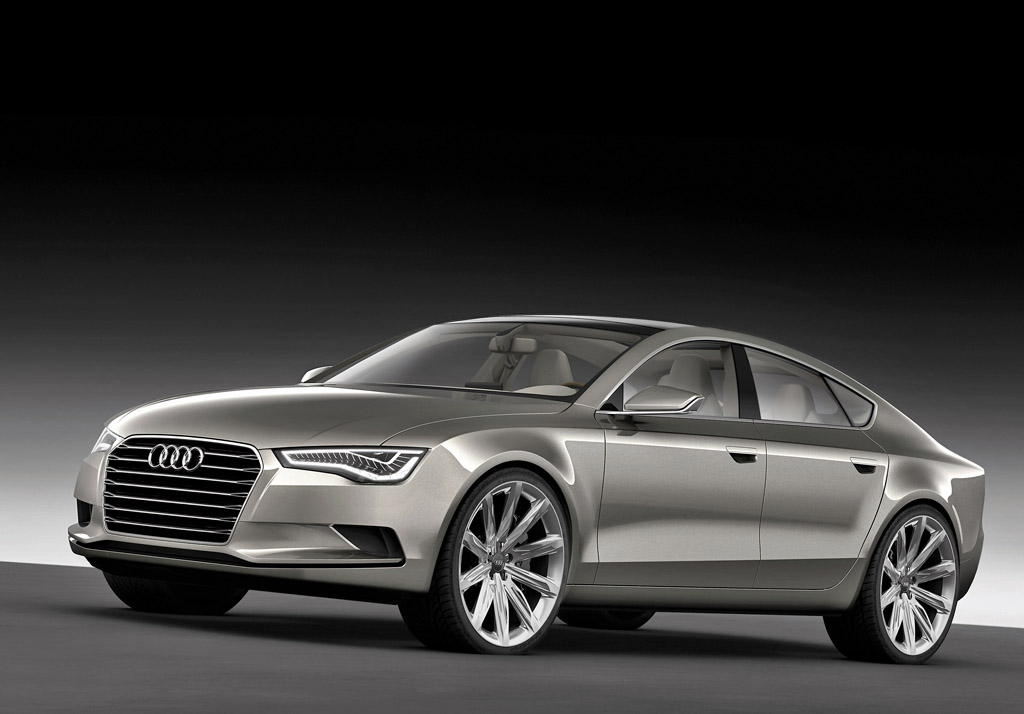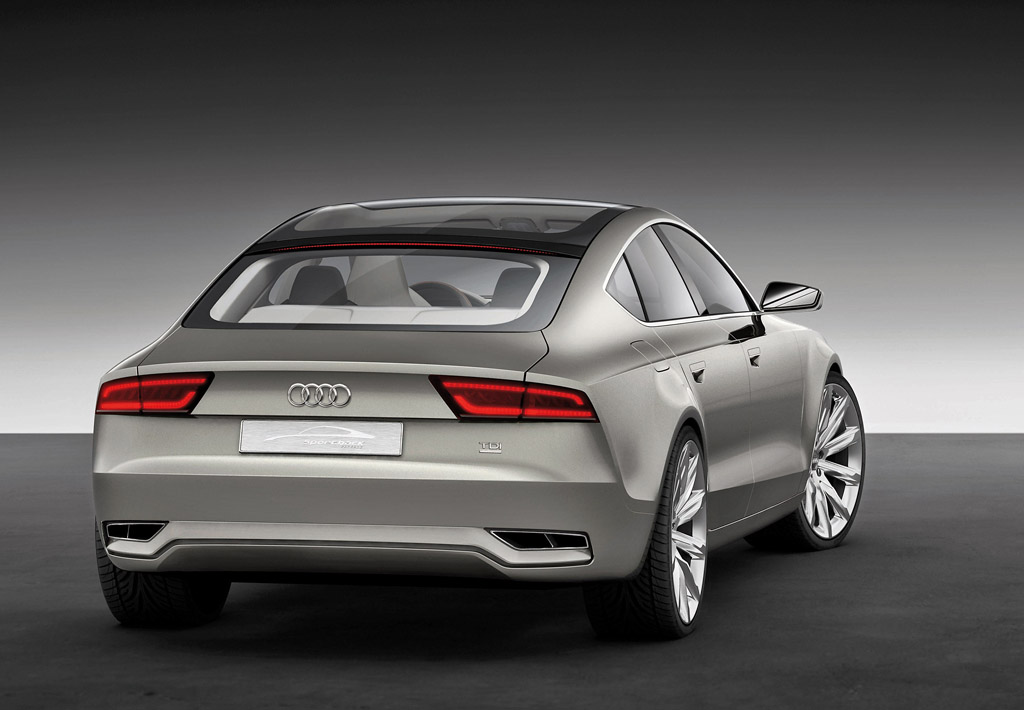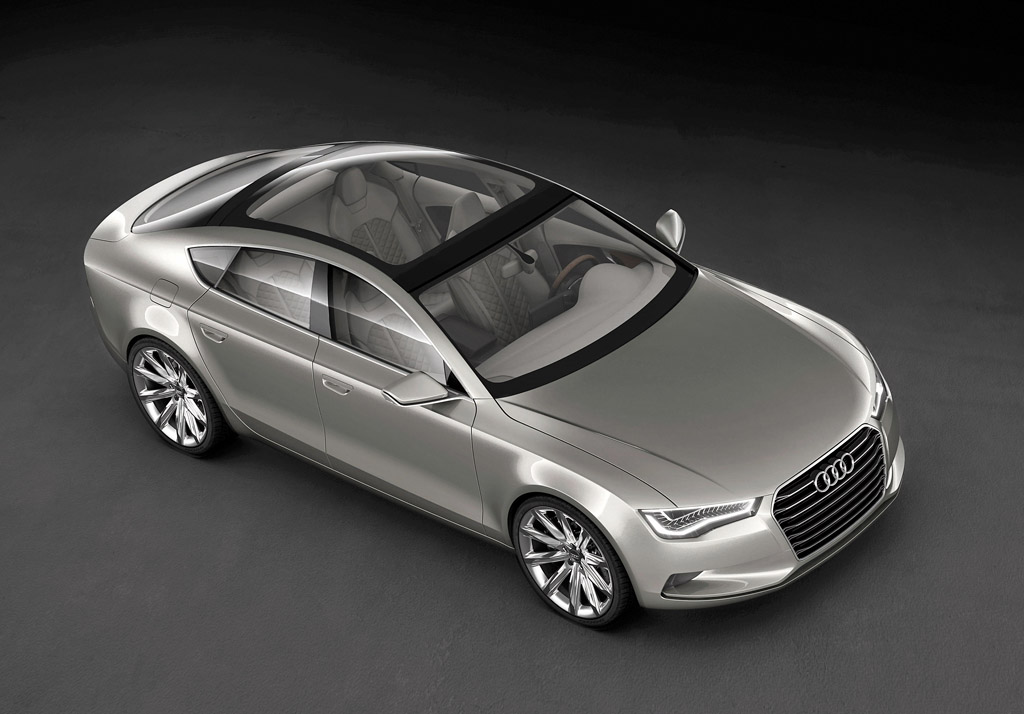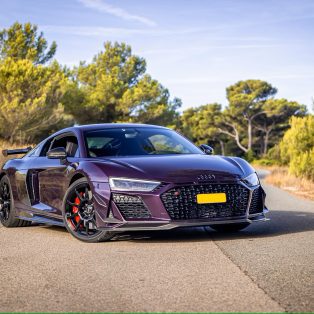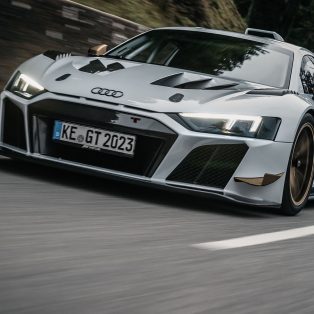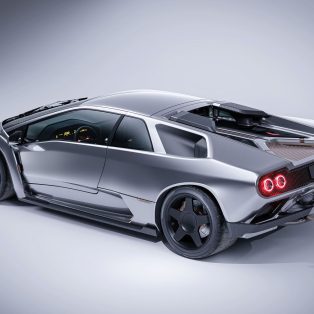2009 Audi Sportback Concept
The new Audi Sportback concept has Detroit in a spin this week with a seamless blend of sports coupe desirability and five-door hatchback practicality that has made it one of the undisputed stars of the 2009 North American International Automobile Show. The sleek five-door GT is the latest in a long line of Audi design studies, many of which have transferred virtually unchanged to the production line, and not only offers a glimpse of Audi’s future design vocabulary, but also raises the stakes technologically with a new 47mpg-plus TDI engine featuring the world’s cleanest diesel technology.
As its name suggests, the Audi Sportback concept is a variation on the theme first defined in the Audi range by the A3 Sportback with its combination of sleek sports hatch styling and five-door versatility, and signals the brand’s intention – as previously demonstrated by the A1 Sportback concept – to dramatically expand its line-up of Sportback models.
World’s cleanest TDI technology
Power for the striking new coupe comes courtesy of a new version of the acclaimed 3.0-litre V6 TDI. In its latest guise this advanced unit can lay claim to offering the world’s cleanest diesel technology thanks to numerous new efficiency optimisation measures that not only give it the potential to provide up to 47.8mpg, but also to meet the emissions limits of all 50 U.S states and the forthcoming EU6 standard.
These measures include a downstream exhaust emission control system, which by injecting a biological additive called AdBlue upstream of the DeNOx catalytic converter helps to reduce harmful nitrogen oxide emissions by up to 90 per cent, and unique combustion chamber sensors that enable even more precise regulation of the combustion process – another world first for Audi. More familiar components, including the piezo common rail injection system, highly efficient exhaust gas recirculation, optimized turbocharging and a highly efficient, regulated diesel particulate filter also help to significantly reduce raw engine emissions.
Thanks to its extremely low emission levels, this modern direct-injection diesel engine can be put into service anywhere in the world, even in the U.S. state of California, which has the world’s most stringent emissions limits. Compared with the fleet average of the petrol engines typically found in the U.S., the TDI boasts a fuel-efficiency advantage of up to 40 per cent. The diesel technology thus makes a greater contribution than any other type of engine to reducing the consumption of fossil fuels. Audi will introduce this engine in the U.S. and Europe during 2009.
As in the U.S. version of the Audi Q7 3.0 TDI, the V6 produces 225PS and 550 Nm of torque in the Audi Sportback concept, which helped by its relatively low 1,800- kilogramme kerb weight and slippery 0.30 drag coefficient, translates this into a 0-62mph acceleration time of less than 7 seconds and a top speed of 152mph. Power is transferred to the wheels via Audi’s most modern transmission: the new 7-speed S tronic twin-clutch, and is contained by the quattro permanent all-wheel-drive system.
The Audi Sportback concept’s average fuel economy according to the European ECE standard is 47.8mpg, and its CO2 emissions no more than 156 g/km. These sensationally low figures for a car of this size have been achieved by extensive efficiency-optimizing measures covering not only the engine but also its ancillaries.
Numerous new energy-saving features
For the first time in an Audi model powered by a longitudinally mounted engine, the Sportback concept features electromechanical power steering with a pump that consumes energy only when the wheel is turned, and not in the ‘straight-ahead’ position. This ‘on-demand’ approach also applies to the fuel pump, which uses less energy by activating only when there is a demand for fuel.
The already efficient S tronic twin-clutch transmission has also been enhanced by transmission oil heating which reduces internal friction by bringing the gearbox up to its intended operating temperature much earlier. And in a similar vein, an innovative temperature management system brings the TDI engine up to its most efficient operating temperature more quickly by diverting part of the coolant flow.
Energy recuperation and start-stop
When coasting, the Audi Sportback concept – like the Audi A4 and Audi Q5 production models – recuperates energy. This boosts the output of the alternator and is used to charge the battery. This energy, which in effect costs nothing to recover, is fed back into the vehicle’s electrical system when needed. An automatic start-stop system shuts the TDI engine down to save energy, for instance when waiting at a traffic signal.
And when it is on the move, tyres optimized for low roll resistance cut fuel consumption significantly without impacting on performance.
The Audi Sportback concept show car takes the basic architecture and many components of its suspension from the brand’s latest and most successful model family: the A4/A5 model series. The new five-link front suspension makes a major contribution to the car’s dynamic character, and by moving the differential further forward and the clutch further back, the design engineers were able to reposition it 154 millimetres further forward for optimal distribution of weight between the front and rear axles.
The A4 and A5 also donate their accalaimed Audi drive select adaptive dynamics system incorporating CDC (continuous damping control) shock absorbers whose operation can be continuously varied. The control unit selects the optimum damping force for the current driving situation, for instance firmer damping to prevent body roll and pitch when cornering fast or braking, or lower damping force where the surface under the wheels is hard and uneven.
Ceramic brakes
The Audi Sportback concept is equipped with ceramic brakes on all four wheels for effective deceleration even under the most demanding conditions. Compared with conventional steel disks, ceramic brakes not only last four times longer, up to 186,411 miles, but also offer high resistance to fading. The significant reduction in weight also leads to advantages in terms of comfort and handling, thanks to reduced unsprung masses.
On the front axle, 380-millimetre ceramic disks are fitted in combination with 21-inch wheels. The rear disks have a diameter of 356 millimetres. The elaborate cooling duct geometry of the ventilated brake disks ensures optimal cooling of the brake disks. Firm grip on the brake disk is guaranteed at the front by 6-piston monobloc aluminum brake calipers, and at the rear by floating-caliper brakes.
As with the exterior, the interior of the Audi Sportback concept is characterized by the emphasis on horizontal lines and large surfaces. This is especially true of the wide centre console – stretching from the dashboard to the back – which seems to be a pure expression of function. The flat display of the MMI system is realized as a retractable system in the show car. When the ignition is activated, it extends horizontally from a slot above the central air register before moving in an elegant arc into a vertical, easy-to-read position.
The large glass roof underscores the width and feeling of spaciousness, and the sumptuous oak blockboard trim and unusually liberal use of leather – which envelops everything from the dashboard and headlining right through to the boot – emphasizes the study’s brief as a luxury grand tourer in the traditional sense. The ample shoulder, head and leg room offered by its four seats, and the generous capacity of its 500-litre load area also furthers this aim.
Picture caption
Audi Sportback concept wows Detroit – The new Audi Sportback concept debuts at the NAIAS this week combining the desirability of a sports coupe and the versatility of a five-door hatchback. The sleek five-door GT not only offers a glimpse of Audi’s future design vocabulary, but also raises the stakes technologically with a new 47mpg-plus TDI engine featuring the world’s cleanest diesel technology.
Story by Audi AG
In Detail
| submitted by | admin |
| type | Concept / Prototype Car |





